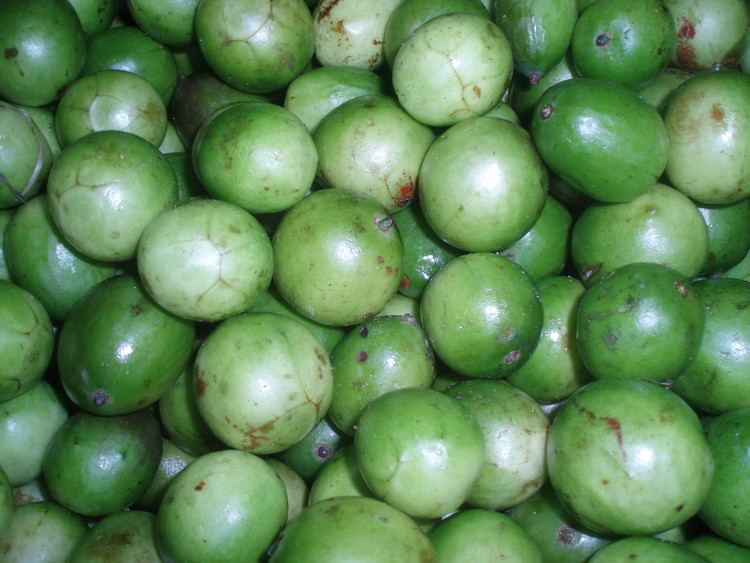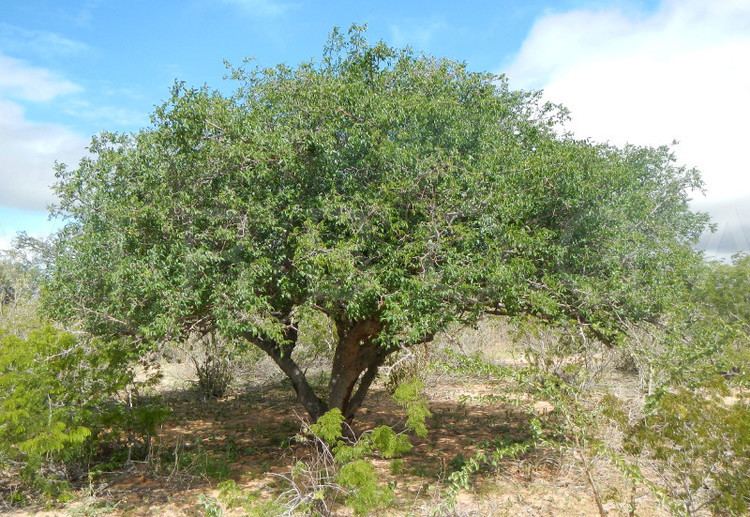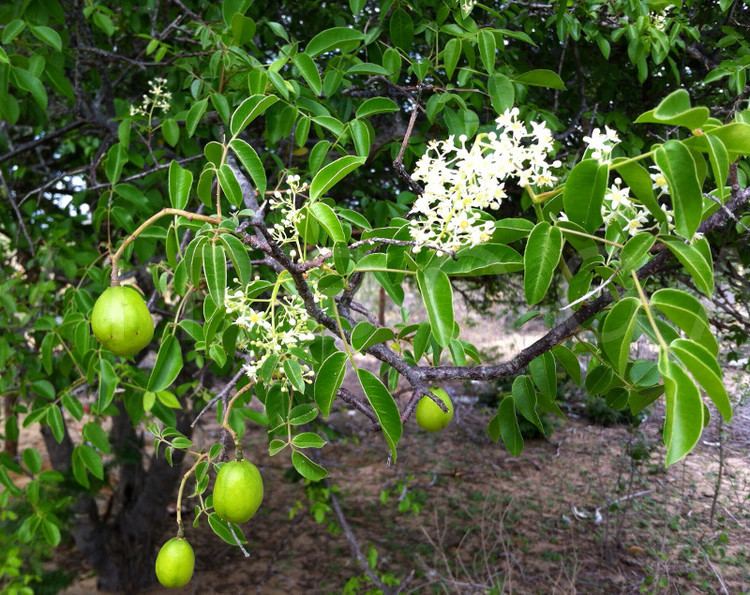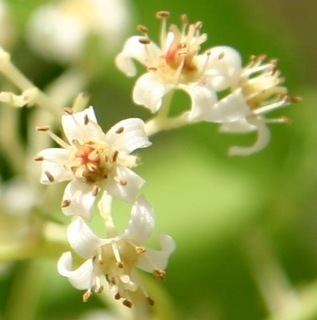Rank Species | Genus Spondias Higher classification Spondias | |
 | ||
Similar Spondias mombin, Spondias purpurea, Spondias, Hancornia speciosa, Talisia esculenta | ||
Putry umbu dedo deku
Spondias tuberosa, commonly known as umbu/imbu, [ũˈbu], [ĩˈbu] Brazil plum, or umbu, is native to northeast Brazil, where it grows in the Caatinga, the chaparral scrub that grows wild across dry lands of the Sertão. The round fruit is light yellow to red in colour, around 2–4 cm in size, and has a leathery shell. The flesh is soft and juicy, with a sweet taste and distinct aroma. The fruit comes from a small tree, seldom higher than 6 m, with an expansive crown of up to 10 m in diameter. The fruit of the imbu are round and can be of varying size: they can be as small as cherries or as large as lemons. The peel is smooth and green or yellow when the fruit ripen, the small firm fruits are juicy and flavorful and their succulent flesh hides a large dark pit.
Contents
- Putry umbu dedo deku
- Umbu gigante produzir em 2 anos como fazer enxerto fa a voc mesmo natureba s tio gilsat
- Etymology
- Uses
- Cooking and jam
- Development
- References

Umbu gigante produzir em 2 anos como fazer enxerto fa a voc mesmo natureba s tio gilsat
Etymology

The name of this tree and fruit comes from the indigenous phrase y-mb-u, which means tree that gives drink. The productive cycle of this wild, spontaneously growing tree begins after ten years of growth. It bears fruit once a year and can produce up to 300 kilos of fruit in a single harvest when it reaches maturity. Due to its robust root system, a great network of tubers that can store liquid throughout the Sertão s dry season, the imbu tree can hold up to 3,000 liters of water during the dry months.
Uses

This tree is an important resource for one of the poorest and driest regions of Brazil, where local agriculture is based on corn, beans, sheep, and goat (dried and salted goat meat is one of the most important local foods). The fruit of the imbu tree is collected by hand gently, as it is easily damaged and during picking the fruits are set in baskets and bags (in the past these fruits were also collected by beating the branches with long poles, to the detriment of their flavor).
Cooking and jam

The imbu can be eaten fresh or made into jams or other sweetened preserves like fruit cheese. In the Sertão, it is cooked down until the peel and the pulp separate. Then, the liquid is poured off, it is mixed with sugar and cooked for another two hours. After the pulp has been reduced to a glossy gelatin (called geléia), it retains a slightly astringent flavor. In addition to the thick paste made by this long, slow boiling process, the imbu is the base of fruit juice, vinagre (the juice pressed from overripe fruit), and jam (made by pressing together layers of dried imbu paste). Another delicacy is the compôte made by mixing the fruit and sugar together in jars. The fresh pulp, or if the fresh fruit is not in season, the vinagre is mixed with milk and sugar to make umbuzada, a rich beverage that is a common substitute for a full meal. The fruit is ideal for mixing with gooseberries or plums and is used in fruit juices, jams and sorbets.
Development

Until a few years ago, no one paid much attention to this fruit. But the work of various organizations (the NGO IRPAA/PRO CUC, the KMB, the Austrian Lins diocese, and Austrian Horizon 3000) has improved the profile of imbu. These groups have worked to improve the public reputation of Caatinga products and have followed the development of the COOPER-CUC cooperative, which produces products that have no added flavors or colors in a small workshop in Uauá in the state of Bahia. The Presidium will draw up a production protocol that ensures the artisan quality of the products made from these fruits and raises the profile of the products on the national and international markets. The objectives extend beyond the improvement of the market for on-farm products to include the development of new work opportunities and new income, the protection of the environment, and the organizational potential of the local population, with a focus on jobs for women.
